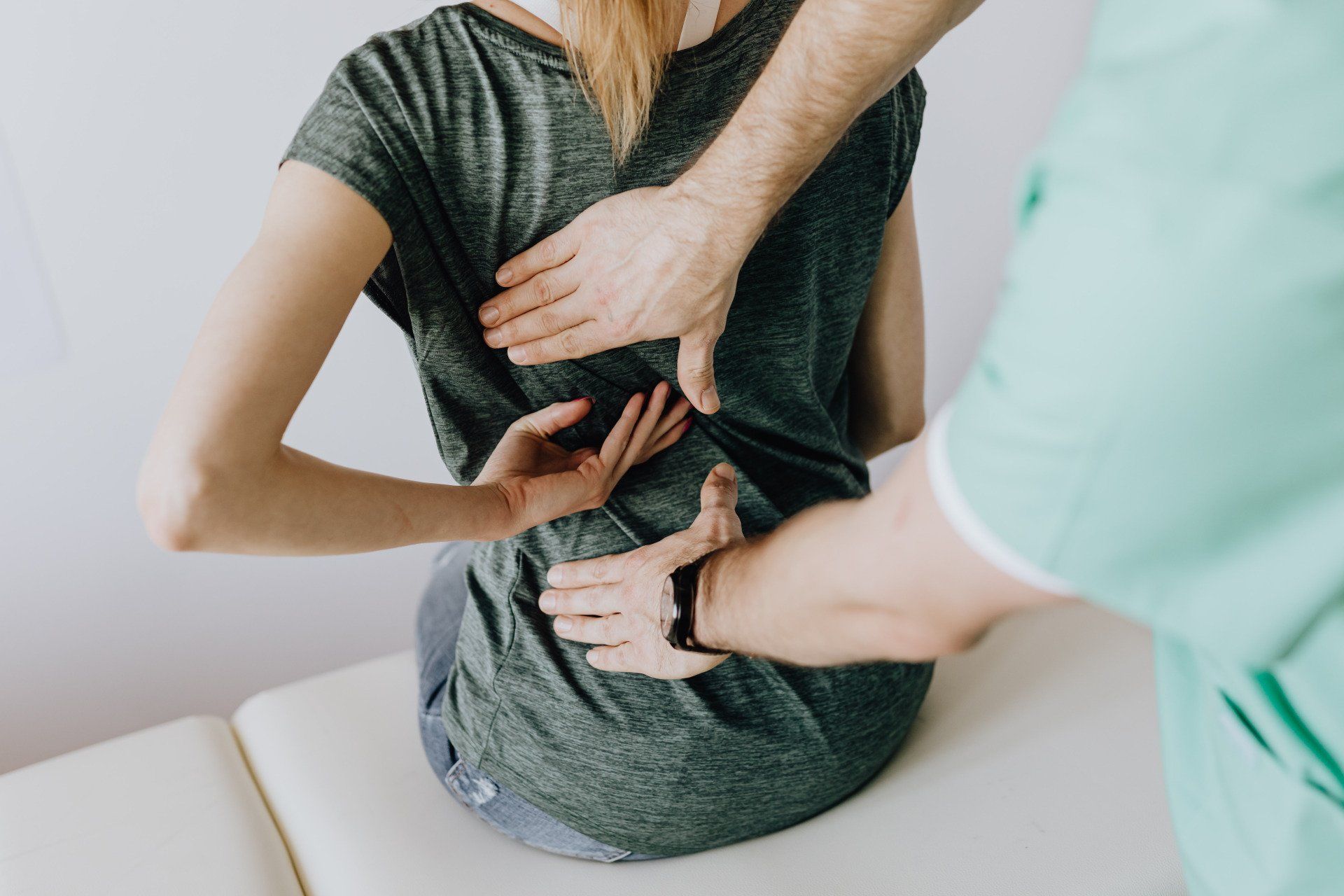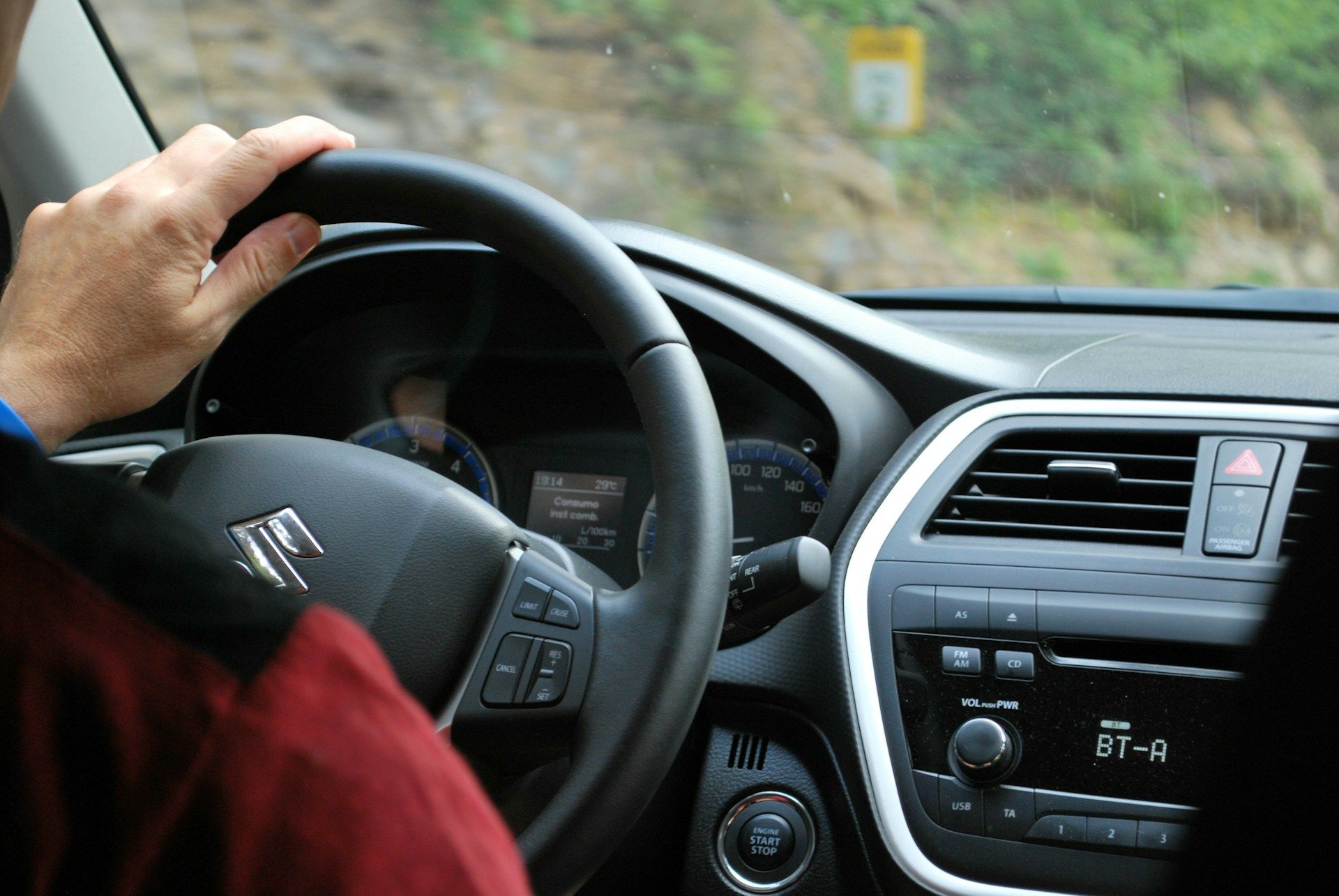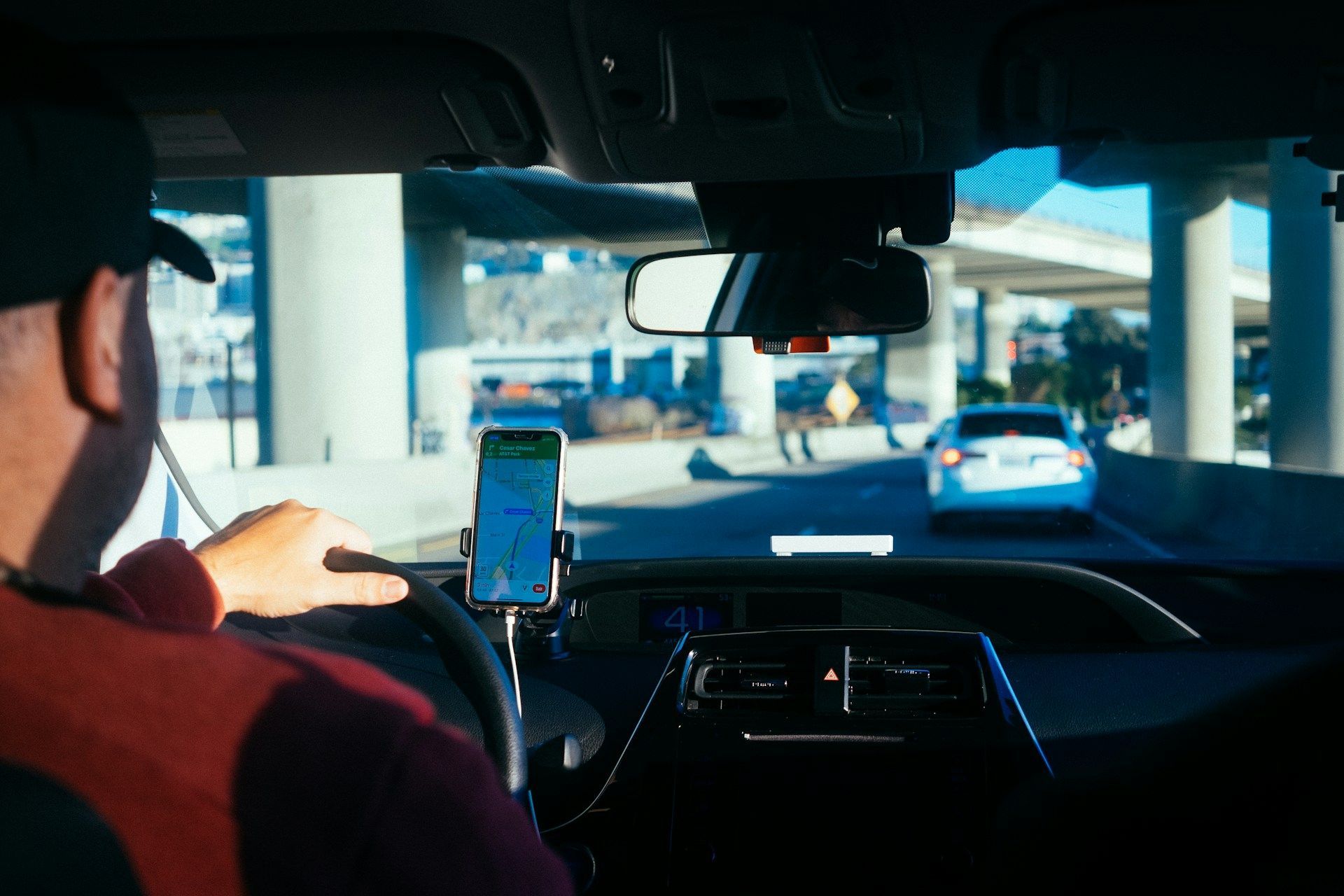Let's talk about your case
You can schedule a call with one of our lawyers anytime. Call today and get the help you need.
Or fill out our online form, and we will respond within 24 hrs.
Quick Guide: Back Pain after Being Rear Ended
Back Hurts After Rear Ended Solutions

Key Highlights
- Rear-end collisions can cause back injuries that may lead to chronic pain if left untreated.
- The dynamics of a rear-end collision can cause significant damage to the spinal discs and soft tissue.
- Immediate symptoms of back pain after a rear-end collision can include neck pain, upper back pain, and muscle strains.
- Delayed symptoms that should not be ignored include herniated discs, nerve damage, and chronic pain.
- Common types of back injuries from rear-end collisions include whiplash, lumbar spine injuries, and disc herniation.
Introduction
Being involved in a rear-end collision can be a traumatic experience, both physically and emotionally. The impact from the collision can cause significant injuries, especially to the back. Back pain after being rear-ended is a common complaint, and it is important to understand the causes, symptoms, and treatment options for this type of injury. In this quick guide, we will explore the dynamics of rear-end collisions, why they often lead to back pain, including whiplash, and car crash-related back injuries. We will also discuss the first steps to take after experiencing back pain, including seeking help for auto accident injuries, the available treatment options, and preventive measures to avoid severe back injuries in rear-end collisions.
Understanding Rear-End Collisions and Back Injuries
Rear-end collisions occur when one vehicle crashes into the back of another vehicle. These accidents can cause significant damage to the spinal discs, soft tissue, and spinal cord. The force from the collision can compress the spinal discs and lead to herniation or bulging discs. The sudden forward motion of the vehicle can also cause muscle spasms and soft tissue injuries. Understanding the dynamics of a rear-end collision and the potential for spinal fractures is crucial in understanding why back injuries are common in these types of accidents.
The Dynamics of a Rear-End Collision
A rear-end collision involves one vehicle crashing into the back of another vehicle. The force from the collision causes the rear vehicle to push forward, resulting in a sudden forward motion for both vehicles. When the front vehicle is at a standstill or moving at a slower speed, the impact transfers its momentum to the rear vehicle and the occupants inside. This sudden motion can be traumatic for the human body, causing the head and spine to jerk forward and backward in a violent motion. Organs inside the body can also be affected, leading to internal injuries. The severity of the injuries depends on the speed of the collision, but even minor rear-end collisions can cause significant damage to the back.
Why Rear-End Collisions Often Lead to Back Pain
Rear-end collisions often lead to back pain due to the impact on the muscles, soft tissue, and spinal discs. The force from the collision can cause muscle spasms and strains, leading to immediate pain and discomfort. The sudden forward motion of the vehicle can also result in soft tissue injuries, such as sprains or tears. The spinal discs, which act as shock absorbers between the vertebrae, can be compressed or herniated due to the force of the collision. This can put pressure on the nerves in the spine and cause radiating pain. The traumatic nature of rear-end collisions, even at low speeds, can result in significant back injuries that may require medical treatment.
Identifying Symptoms of Back Pain After a Rear-End Collision
Identifying the symptoms of back pain after a rear-end collision is crucial for early diagnosis and treatment. The symptoms can vary depending on the severity of the injury and the individual. Immediate symptoms may include neck pain, upper back pain, muscle strains, and stiffness. It is also common to experience tense muscles in the back after a vehicle accident. It is important to note that some symptoms may not appear until days or even weeks after the accident. These delayed symptoms should not be ignored and may include herniated discs, nerve damage, and chronic pain. Being aware of these symptoms can help individuals seek medical attention and receive the necessary treatment.
Immediate Symptoms to Look Out For
Immediate symptoms of back pain after a rear-end collision can include:
- Neck pain and stiffness
- Upper back pain and muscle strains
- Difficulty moving the neck and shoulders
- Headaches and migraines
- Tingling or numbness in the arms or hands
Paying attention to these symptoms and seeking medical attention if they persist or worsen over time is important. Immediate medical care can help determine the extent of the injuries and provide appropriate treatment to prevent further complications.
Delayed symptoms of back pain after a rear-end collision may not appear immediately after the accident but can develop over time. These symptoms should not be ignored and may include:
- Herniated discs, which can cause radiating pain, numbness, and weakness in the arms or legs
- Nerve damage, resulting in shooting pain, tingling, or loss of sensation
- Chronic pain, which can be persistent and affect daily activities
- Decreased range of motion in the neck or back
- Difficulty sleeping and fatigue
If any of these symptoms occur or persist after a rear-end collision, it is important to seek medical attention for a proper diagnosis and appropriate treatment.
Common Types of Back Injuries from Rear-End Collisions
Rear-end collisions can cause various types of back injuries, ranging from mild to severe. Understanding these common types of injuries is essential for proper diagnosis and treatment. The most common types of back injuries from rear-end collisions include whiplash, lumbar spine injuries, and disc herniation. These injuries can result in neck and back pain, stiffness, limited range of motion, and radiating pain. Prompt medical attention and appropriate treatment are crucial for a successful recovery and to prevent long-term complications, especially in the cervical spine. In fact, whiplash is one of the most common injuries from car accidents, making it important to seek medical attention immediately after a rear-end collision.
Whiplash
Whiplash is a common injury that occurs during a rear-end collision. It is caused by the sudden and forceful movement of the head and neck, resulting in a flexion and extension motion. Whiplash can cause significant damage to the soft tissues in the neck and upper back, leading to pain, stiffness, and limited range of motion. The symptoms of whiplash may not appear immediately after the accident but can develop over time. Shoulder pain is a common symptom of whiplash, along with neck stiffness and pain, and numbness in the arms and hands. Prompt medical attention, including chiropractic care and physical therapy, can help relieve pain, restore range of motion, and support the rehabilitation process for long-term recovery from whiplash.
Lumbar Spine Injuries
The lumbar spine, or lower back, is particularly vulnerable to injuries during a rear-end collision. The force of the impact can cause sprains, strains, or even fractures in the vertebrae, including spinal cord injuries. Lumbar spine injuries can result in severe back pain, limited mobility, and radiating pain into the legs. These injuries may require a combination of medical treatment, physical therapy, and chiropractic care to alleviate pain, restore function, and promote healing. Early diagnosis and appropriate treatment are essential to prevent long-term complications and chronic pain. In some cases, injuries to the thoracic spine, or upper and middle part of the back, may also occur during a rear-end collision. These injuries can be just as debilitating and may require similar treatment methods.
Disc Herniation
Disc herniation is another common back injury that can occur during a rear-end collision. The force of the impact can cause the spinal discs, which act as cushions between the vertebrae, to bulge or rupture. This can lead to pressure on the nerves in the spine, causing pain, numbness, and tingling in various parts of the body. Disc herniation can also result in decreased range of motion and difficulty performing daily activities. Treatment options for disc herniation may include physical therapy, chiropractic care, and spinal decompression therapy, which can increase blood flow to the injured area and help the displaced disc slip back into place. Early diagnosis and appropriate treatment can help alleviate symptoms and prevent further complications.
First Steps to Take if You Experience Back Pain After Being Rear-Ended
If you experience back pain after being rear-ended, it is important to take the following steps:
- Seek medical treatment: Visit a healthcare professional to assess the extent of your injuries and receive appropriate treatment.
- Take immediate actions: Follow the advice of your healthcare professional, which may include rest, ice or heat therapy, and pain medication.
- Notify your insurance company: Report the accident to your insurance company to initiate the claims process.
- Gather evidence: Keep records of medical expenses, treatment plans, and any other relevant documentation related to the accident.
Consult with a personal injury lawyer: If you believe you are entitled to compensation for your injuries, consult with a personal injury lawyer to understand your legal options.
Treatment Options for Back Pain Post-Collision
There are several treatment options to consider for back pain after a rear-end collision. These options may include:
- Conservative treatments: These may include rest, ice or heat therapy, physical therapy, chiropractic care, and non-prescription pain medication.
- Physical therapy: A physical therapist can design a treatment plan tailored to your specific needs to improve mobility, reduce pain, and promote healing.
- Pain medication: Over-the-counter or prescription pain medication may be recommended to alleviate pain and discomfort.
- Surgical options: In severe cases where conservative treatments fail to provide relief, surgery may be necessary to repair or stabilize the affected area.
Conservative Treatments and Their Effectiveness
Conservative treatments are often the first line of treatment for back pain after a rear-end collision. These treatments may include:
- Rest: Taking a break from activities that exacerbate pain can help alleviate symptoms and promote healing.
- Ice or heat therapy: Applying ice or heat to the affected area can help reduce inflammation and provide pain relief.
- Physical therapy: A physical therapist can design a treatment plan that includes exercises, stretches, and manual therapy to improve mobility and reduce pain.
- Chiropractic care: Chiropractic adjustments can help realign the spine, alleviate pain, and improve overall function.
- Non-prescription pain medication: Over-the-counter pain medication, such as acetaminophen or nonsteroidal anti-inflammatory drugs (NSAIDs), can provide temporary pain relief.
These conservative treatments are often effective in relieving back pain and promoting the healing process. However, it is important to consult with a healthcare professional for a personalized treatment plan.
The Role of Physical Therapy in Recovery
Physical therapy plays a crucial role in the recovery process after a rear-end collision. A physical therapist can design a treatment plan tailored to your specific needs, focusing on improving mobility, reducing pain, and promoting healing. The treatment plan may include:
- Exercises: Targeted exercises can help strengthen the muscles supporting the spine, improve flexibility, and increase range of motion.
- Stretches: Stretching exercises can help relieve tension in the muscles, improve flexibility, and reduce pain.
- Manual therapy: Hands-on techniques, such as massage or joint mobilization, can help alleviate pain, improve circulation, and promote healing.
- Education: Physical therapists can provide guidance on proper body mechanics and ergonomics to prevent future injuries.
- Home exercises: Physical therapists may prescribe specific exercises to be performed at home to complement in-clinic treatments and promote long-term recovery.
Preventive Measures to Avoid Severe Back Injuries in Rear-End Collisions
Taking preventive measures can help reduce the risk of severe back injuries in rear-end collisions. Some measures to consider include:
- Maintain a safe following distance: Keep a safe distance from the vehicle in front of you to allow for adequate reaction time.
- Use safety features: Ensure that your vehicle is equipped with safety features such as seat belts, airbags, and head restraints that can help reduce injury risk.
- Practice defensive driving: Be aware of your surroundings and anticipate potential hazards to avoid collisions.
- Seek regular medical check-ups: Regular check-ups can help detect and address any pre-existing conditions that may increase the risk of severe injuries in the event of a rear-end collision.
Safety Features That Can Reduce Injury Risk
Safety features play a crucial role in reducing the risk of severe injuries in rear-end collisions. Some safety features to consider include:
- Seat belts: Wearing seat belts can help prevent ejection from the vehicle, reduce the risk of impact injuries, and keep occupants restrained in the event of a collision.
- Airbags: Frontal airbags can protect the driver and front seat passenger from hitting their heads or upper bodies on the dashboard or steering wheel, reducing the risk of traumatic brain injury and other severe injuries.
- Head restraints: Properly adjusted head restraints can help prevent whiplash injuries by supporting the head and neck during a collision.
It is important to ensure that these safety features are functioning properly and to use them at all times while driving or riding as a passenger to reduce the risk of severe back injuries in rear-end collisions.
Best Practices for Drivers and Passengers
Adopting best practices while driving or riding as a passenger can help reduce the risk of severe back injuries in rear-end collisions. Some best practices to consider include:
- Buckle up: Ensure that you and all passengers are wearing seat belts properly at all times.
- Adjust head restraints: Position head restraints to the appropriate height and distance from the back of the head to provide optimal support during a collision.
- Maintain a safe following distance: Keep a safe distance from the vehicle in front of you to allow for adequate reaction time and prevent rear-end collisions.
- Practice defensive driving: Be aware of your surroundings, anticipate potential hazards, and avoid aggressive driving behaviors.
- Seek medical attention: If you experience back pain or any other symptoms after a rear-end collision, seek medical attention promptly to assess the extent of your injuries and receive appropriate treatment.
Frequently Asked Questions
Is It Normal to Feel Back Pain Immediately After the Collision?
Yes, it is normal to feel back pain immediately after a rear-end collision. The impact from the collision can cause immediate pain and discomfort in the back and surrounding areas. It is important to seek medical attention to assess the extent of the injury and receive appropriate treatment.
Can Minor Rear-End Collisions Cause Serious Back Injuries?
Yes, even minor rear-end collisions can cause serious back injuries. The force from the collision can lead to muscle strains, soft tissue injuries, and herniated discs. Prompt medical attention and appropriate treatment are crucial to prevent long-term complications.
Resources:
https://www.aans.org/Patients/Neurosurgical-Conditions-and-Treatments/Low-Back-Pain
https://pubmed.ncbi.nlm.nih.gov/9455663/
https://www.sciencedirect.com/science/article/abs/pii/S0001457523000945
https://www.sciencedirect.com/science/article/pii/S0001457523000945
https://www.sciencedirect.com/science/article/pii/S0001457519316884
Let's talk about your case
You can schedule a call with one of our lawyers anytime. Call today and get the help you need.
Or fill out our online form, and we will respond within 24 hrs.
Thank you for contacting us.
We will get back to you as soon as possible. You can also book using this link: Personal Injury Booking Page
Please try again later
Related Blog Posts
Practice Areas
QUICK LINKS
CONTACT US
Tel: (613) 505- 5025
Fax: (613) 234-5852
info@wvgblaw.com
200-2571 Carling Avenue
Ottawa, Ontario
K2B 7H7
SERVICES
RECENT BLOG POSTS














